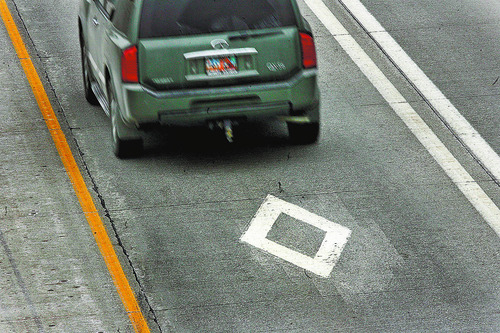This is an archived article that was published on sltrib.com in 2013, and information in the article may be outdated. It is provided only for personal research purposes and may not be reprinted.
Carpool express lanes are carrying about twice as many passengers as regular freeway lanes in Utah, with traffic moving 5 to 6 mph faster with fewer accidents.
At the same time, about one of every eight vehicles traveling in the express lanes is doing so illegally.
That's according to an annual report on the high occupancy vehicle lanes, given to legislators Wednesday by the Utah Department of Transportation.
Utah has 62 miles of such lanes on Interstate 15 along the Wasatch Front and is about to add 10 more miles in Davis County. That is the longest stretch of express lanes in the country, said UDOT Executive Director Carlos Braceras.
"The express lanes are moving almost twice as many people as general-purpose lanes," about 3,600 per hour compared to 1,900, Braceras said. That is mostly because cars in the carpool lane carry more passengers.
Braceras said surveys show about 12 percent of cars there are violators, down about 1 percent from last year after some enforcement blitzes by the Utah Highway Patrol.
Carpools account for 63 percent of vehicles in the lanes. Braceras said the 5 to 6 mph faster speeds there help encourage carpools.
Another 19 percent of cars in the express lanes are single-passenger vehicles paying tolls. Another 4 percent are clean-fuel vehicles, which may use the lanes for free. And 2 percent are buses or motorcycles, also allowed toll-free.
Express lanes carry 10.3 percent of all traffic but have only 6.2 percent of the crashes. The improved safety record is because cars move in and out of express lanes less often than other lanes and also have no traffic to their left, Braceras said.
Braceras said It costs Utah $840,000 to operate a toll system with electronic transponders to allow single-car drivers to use the carpool lanes, and the system brings in only $672,000 in revenue.
Braceras said UDOT is working with the contractor that operates the transponders to try to close that funding gap.



